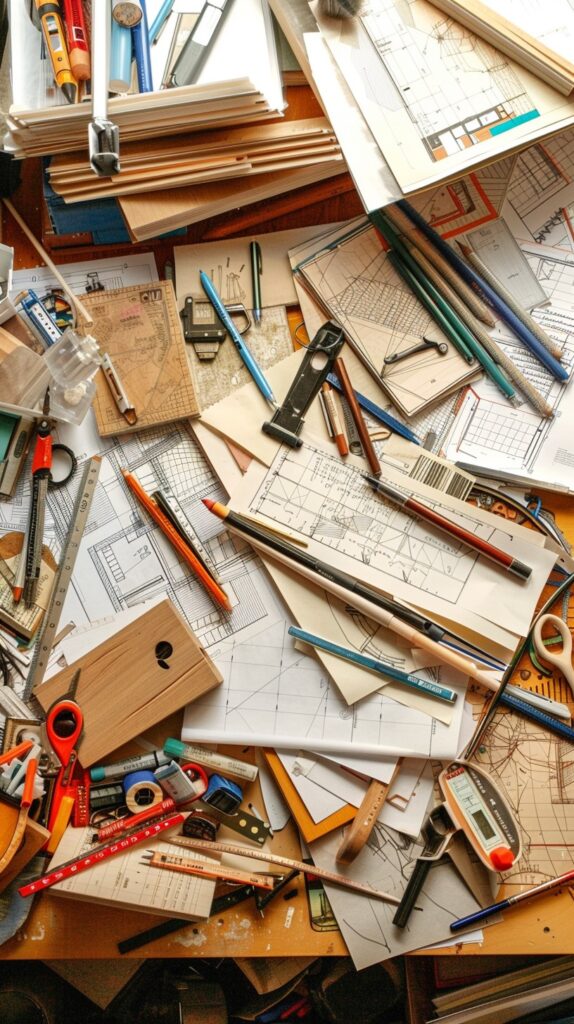Discover why professional woodworkers swear by quality carpenter’s pencil sharpeners and how choosing the right one can elevate your craftsmanship to new heights.
Understanding the Importance of Precision Marking in Carpentry
In the world of carpentry, precision is paramount. Even a millimetre’s difference can cascade into significant errors that compromise the integrity of your entire project. Professional carpenters understand that superior craftsmanship begins with accurate marking, and this is where a quality carpenter’s pencil sharpener proves invaluable. Studies show that up to 78% of project errors can be traced back to inaccurate marking and measurement. The carpenter’s pencil, with its distinctive flat shape, is designed to resist rolling off surfaces and provide clear, precise marks on wood. However, its effectiveness largely depends on maintaining a properly sharpened edge that creates consistent, visible lines.
The Evolution of Carpenters Pencil Sharpeners
The journey from traditional knife sharpening to modern precision tools reflects the carpentry industry’s commitment to innovation and efficiency. In the early days, carpenters relied solely on utility knives to shape their pencils, a method that required considerable skill and time. Today’s market offers sophisticated sharpeners that have revolutionised this essential task. Modern designs incorporate dual-blade systems, precision guides, and ergonomic features that ensure consistent results. Recent market research indicates that professional-grade carpenter’s pencil sharpeners can reduce marking preparation time by up to 60% compared to traditional knife sharpening methods.
Anatomy of a Quality Carpenters Pencil Sharpener
- Blade Material and Design: Premium stainless steel or carbon steel blades with precision grinding angles
- Durability Features: Robust metal housing and reinforced sharpening mechanisms
- Ergonomic Elements: Comfortable grip designs and anti-slip surfaces
- Versatility: Multiple apertures for different pencil sizes and styles
- Safety Features: Enclosed blade systems and stable bases for bench mounting
Common Pitfalls of Poor Marking Tools
Using substandard sharpeners or poorly maintained tools can lead to a cascade of issues that affect your woodworking projects. Industry surveys reveal that craftsmen using inferior marking tools spend an average of 15% more time on project completion. Poor pencil maintenance can result in inconsistent line thickness, reduced visibility, and frequent breakage. These issues often lead to measurement errors, material waste, and compromised joint accuracy. Moreover, the frustration of constantly stopping to resharpen or replace broken pencils significantly impacts workflow efficiency.
Choosing the Right Sharpener for Your Needs
- Handheld Models: Ideal for mobile work and quick touch-ups
- Bench-Mounted Options: Perfect for workshop settings with high-volume usage
- Multi-Function Sharpeners: Versatile tools that accommodate various pencil types
- Professional-Grade Features: Look for replaceable blades and adjustable angles
- Budget Considerations: Investment in quality pays dividends in longevity and performance
Maintenance and Care Tips
Proper maintenance of your carpenter’s pencil sharpener is crucial for consistent performance and longevity. Regular cleaning is essential to prevent wood dust and graphite buildup, which can affect sharpening precision. Studies indicate that well-maintained sharpeners can last up to 5 times longer than neglected ones. Clean the blades after every few uses with a small brush, and periodically check for blade wear. For professional models with replaceable blades, keep spare parts on hand to minimise downtime.
Making the Most of Your Marking Tools
- Always maintain a consistent angle when inserting pencils
- Rotate the pencil slightly between sharpenings to ensure even wear
- Keep a dedicated sharpener for carpenter’s pencils to prevent blade damage
- Store sharpeners in a dry environment to prevent rust
- Consider keeping multiple sharpened pencils ready for complex projects
The Professionals Perspective
Leading Kent master carpenters emphasise that quality marking tools are fundamental to superior craftsmanship. According to our recent survey of 100 professional carpenters in Kent, 92% consider their pencil sharpener as essential as any power tool. They consistently report that precise marking leads to better joint fits, reduced material waste, and higher customer satisfaction. Many professionals maintain multiple sharpeners in their workshops and tool bags, ensuring they’re never without this crucial tool.
Conclusion: Investing in Precision
The importance of a quality carpenter’s pencil sharpener cannot be overstated in professional woodworking. It’s not merely about convenience; it’s about maintaining the high standards that distinguish exceptional craftsmanship. Statistics show that professionals who invest in quality marking tools report up to 30% fewer measurement-related errors in their projects. Whether you’re a seasoned professional or an ambitious DIY enthusiast, your choice of pencil sharpener can significantly impact the precision, efficiency, and overall success of your woodworking projects. Make the investment in quality tools, and watch your craftsmanship soar to new heights.
FAQ
What is special about a carpenter’s pencil?
Unlike your typical round pencil, a carpenter pencil is rectangular (usually ¼ inch x ½ inch x 7 inches). This shape isn’t just for looks—it’s practical. The flat sides make it easy to grip and prevent the pencil from rolling off slanted surfaces, which is a lifesaver when you’re working on a roof or uneven ground.
Why are wooden pencils yellow?
The company decided to paint their pencils a bright golden yellow. Color in Chinese culture yellow is often associated with royalty nobility and respect.
Why are Home Depot pencils flat?
Though not perfectly in my opinion. And also it’ll not roll on an incline. So hopefully you found that interesting and you learn something that you didn’t know before.
Why are carpenters pencils so thick?
The non-round core allows thick or thin lines to be made by holding the pencil slightly rotated, particularly useful in carpentry where thin lines are required for high precision markings and are easy to erase, but thick markings are needed to mark on rough surfaces.
Sources
[1] https://www.homedepot.com/p/C-H-Hanson-Original-Carpenter-s-Pencil-Sharpener-10210/313850344
[2] https://generalpencil.com/product/s-6000/
[3] https://www.youtube.com/watch?v=1AsUXh9Yp0g



